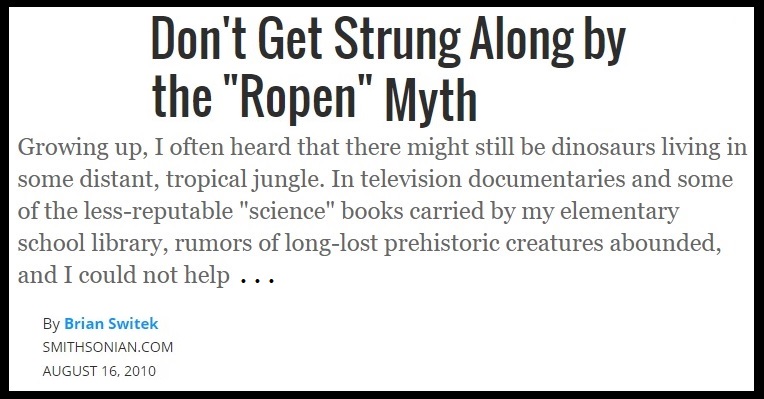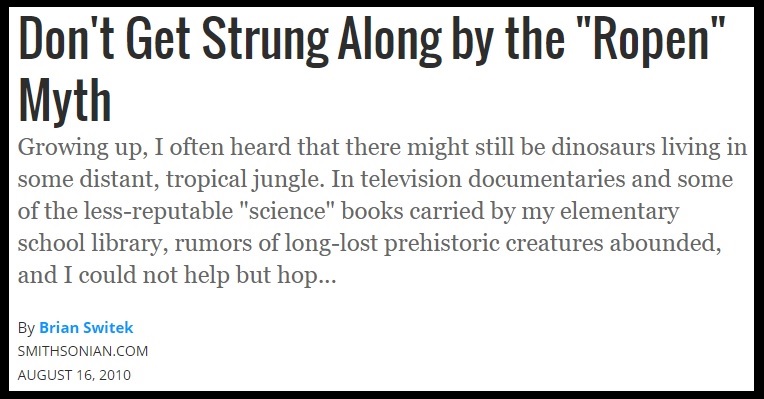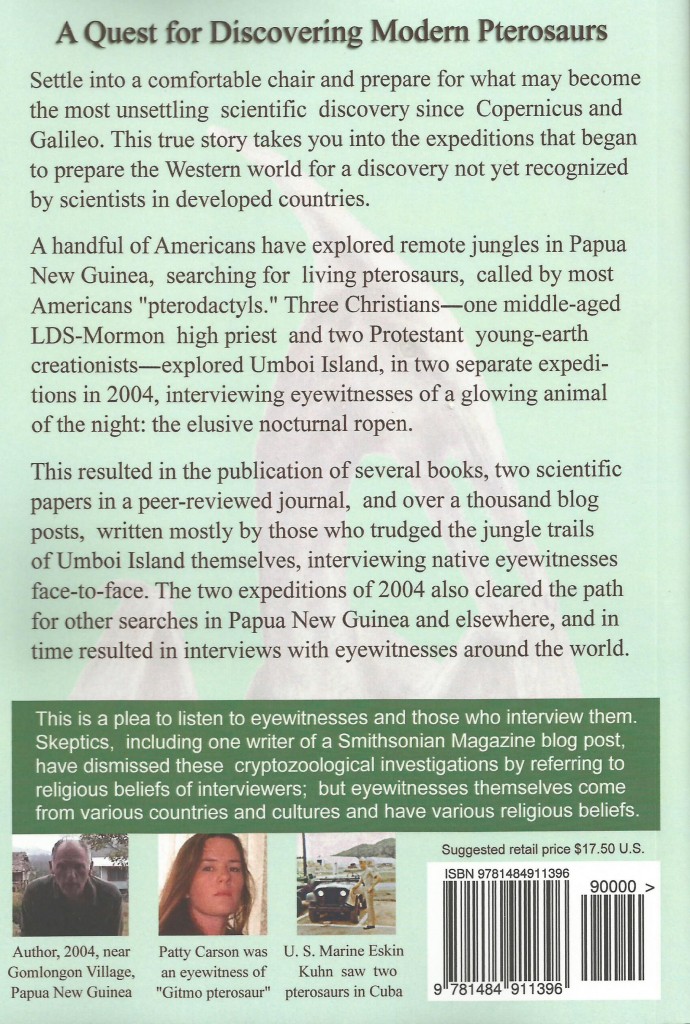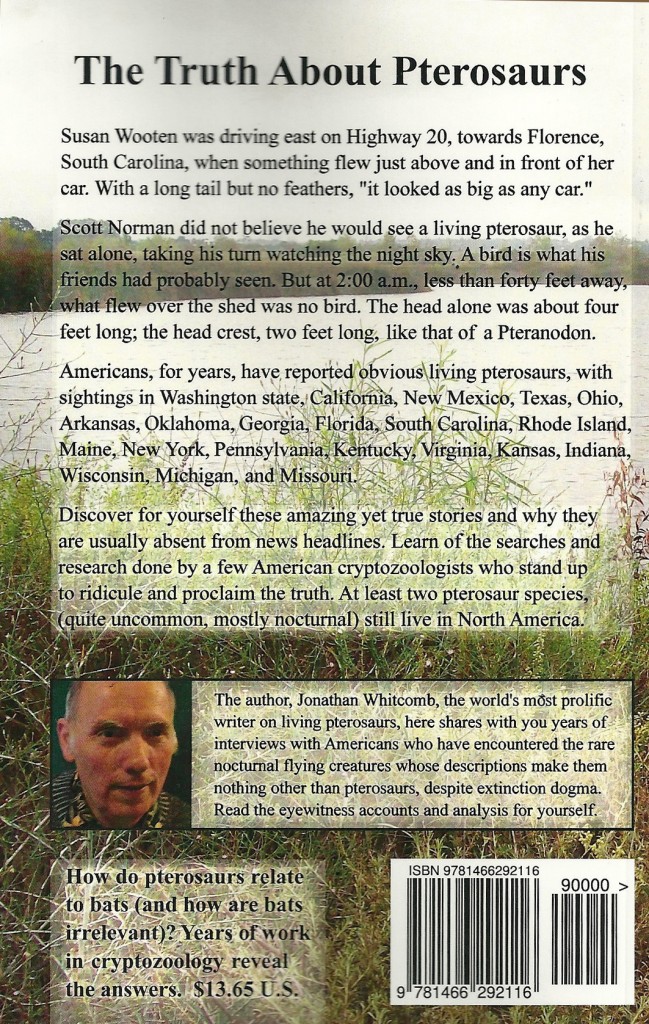This is a reply to “Don’t Get Strung Along by the ‘Ropen’ Myth.” This Smithsonian online post supports the dogma of the universal extinctions of all species of dinosaurs and pterosaurs. I call it a “myth”: the total extinction of all varieties of pterosaurs. My associates and I, in contrast to the author of this Smithsonian article, have researched this subject seriously over many years and declare that regardless of how many species of those amazing flying creatures have become extinct in the past, some species still survive.
So where is the scientific evidence for the universal extinction of all species of pterosaurs? Notice the Smithsonian blog post by Brian Switek*, dated August 16, 2010: not one reference to an eyewitness sighting report. Switek says “such anecdotes,” without mentioning what he is talking about. He says much about the religious beliefs of Blume and Woetzel, as if that counts against their ideas, but why does he say nothing about what caused those expeditions: eyewitness reports? And he says nothing about the fact that the eyewitnesses come from around the world, with no indication of any preponderance of creationists among those eyewitnesses. *( In recent years this online article, “Don’t Get Strung Along by the ‘Ropen’ Myth”, has a different name for the author because of a personal name change: In 2010 he called himself “Brian Switek”.)
Like some paleontologists I have communicated with, Switek says not one word about any scientific test related to the universal-extinction conjecture for pterosaurs. He also mentions no date for any scientific study on the subject, nothing.

Headline of a faulty online article of the Smithsonian Magazine
Mr. Switek writes as if science were on his side, as he emphasizes the religion of those whom he associates with “hucksters.” Yet a deeper look into what he seeks to protect—that reveals that the general extinction idea originated when George Washington was president. Look into history and I believe you’ll find that no scientific study was ever conducted relevant to the extinction of ALL SPECIES of pterosaurs, from the time of George Washington until Mr. Switek wrote his Smithsonian blog post in 2010 . . . with one exception: the work of those whom he ridicules in “Don’t Get Strung Along by the ‘Ropen’ Myth.”
The newspaper article Switek criticizes was indeed seriously flawed. Yet the newspaper writer is not one of those who explored remote jungles, searching for living pterosaurs. Of course a photograph of a Frigate bird is no evidence for a modern pterosaur, but Switek’s writings are also flawed, leaving out the critical eyewitness evidence as if it could not be worth considering.
Note that I do not excuse careless newspaper writings, even when one of them appears to support the work of my associates who have searched for living pterosaurs in remote locations. Careless writing needs to be corrected, preferably before a newspaper article is published. Edit carefully before publishing your writing, but even more important is this: Look deeply into the subject before doing much writing about it.
.
Back cover of a nonfiction cryptozoology/spiritual book
.
From Searching for Ropens and Finding God (page beginning on page 294)
He says nothing about me or my associates Garth Guessman and Paul Nation, but does mention David Woetzel and Jim Blume . . . Be aware that the Smithsonian post that portrays the ropen as a myth was a response to a flawed newspaper article written to support the ropen as a possible pterosaur. Both writings have problems.
Brian Switek speaks of extinction in the general sense, as have paleontologists who’ve responded to the living-pterosaur investigations. He seems to take standard models without question, like so many others who have dismissed what me and my associates have proclaimed. I submit that the assumption of universal extinction of dinosaurs and pterosaurs is part of what lies at the root-cause of some of the mistakes they have made.
###
.
Refuting “Don’t Get Strung Along by the Ropen Myth”
I found it amusing that Mr. Switek, after going to such lengths to demonstrate the foolishness of those who promote the possibility of living pterosaurs, and beat to death any supposed evidence for that concept, finally, near the end of his post, admits an interesting possibility: Maybe a long-tailed pterosaur may still be living.
Don’t Get Strung Along by the Smithsonian
He may have gotten unanimous approval for pointing out that a photo of a frigate bird is not evidence for living pterosaurs, but he got a stern rebuke for mentioning the word “hucksters” for those who search for cryptids many had assumed have been extinct for millions of years, especially those who have searched in Papua New Guinea for the ropen.
.





